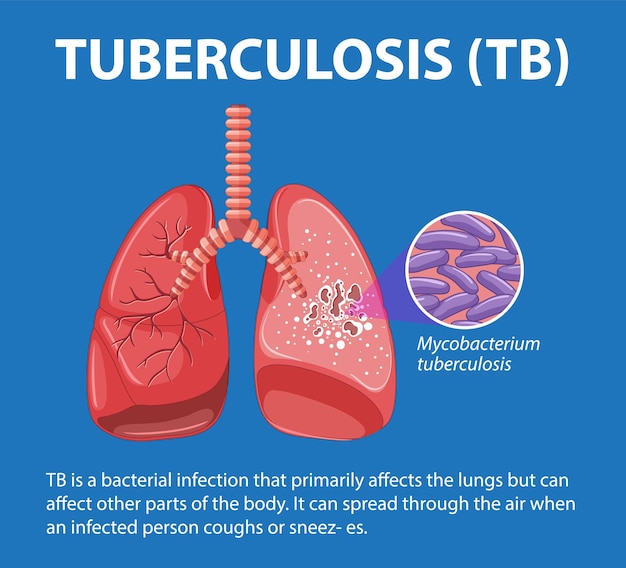Tuberculosis, often abbreviated as TB, is a serious infectious disease caused by the bacterium Mycobacterium tuberculosis. Although it can affect other sections of the body as well, its primary effect is on the lungs. We shall examine every facet of tuberculosis in this extensive guide, covering everything from its causes and symptoms to the potential treatments.
The Basics of Tuberculosis
What is Tuberculosis?
Tuberculosis is a highly contagious bacterial infection that spreads through the air when an infected person coughs or sneezes. Additionally, contaminated surfaces or things might spread it. The key to preventing tuberculosis is understanding how it spreads.
Causes of Tuberculosis
Mycobacterium tuberculosis is the main causative agent of tuberculosis. This pathogen is airborne and has a long half-life outside the body. Living in crowded or unhygienic conditions, having close and extended contact with an infected individual, and having a compromised immune system are some risk factors that can raise the chance of developing tuberculosis.
The Basics of Tuberculosis
Common Symptoms of Tuberculosis
Tuberculosis can manifest in various ways, depending on the part of the body it affects. Chest pain, coughing up blood, and a persistent cough are common signs of pulmonary tuberculosis. The symptoms of extra-pulmonary tuberculosis (TB), which affects other organs, might vary. Early detection of these symptoms is essential for a timely diagnosis and course of therapy.
TB in Children
When a child gets tuberculosis (TB), their symptoms could not be the same
as those of an adult. For prompt diagnosis and care, it is essential to
recognise the distinct symptoms of tuberculosis in children.
Diagnosis and Testing
Tuberculosis Tests
Taken from Google
There are numerous diagnostic procedures available to identify
tuberculosis. These consist of sputum, blood, chest X-rays, and skin testing.
The best test will be chosen by a medical professional depending on the
patient's symptoms and medical background.
Treatment Options
Taken from Google
Medications for Tuberculosis
Antibiotics are often used in combination over a predetermined length of
time as part of the treatment for tuberculosis. Completing the entire
prescribed course of action is essential to guarantee full recuperation and
lower the possibility of drug-resistant strains emerging.
Drug-Resistant Tuberculosis
The TB bacteria may occasionally develop resistance to common drugs. It is
essential to comprehend drug-resistant tuberculosis and the various treatment
options in order to effectively manage these increasingly difficult cases.
Preventing Tuberculosis
TB Vaccination
Taken from Google
Particularly in youngsters, vaccination, such as the Bacillus
Calmette-Guerin (BCG) vaccine, can offer protection against severe forms of
tuberculosis. Getting educated about vaccination alternatives and their
efficacy is crucial for preventing tuberculosis.
Infection Control Measures
Taken from Google
The risk of tuberculosis transmission can be greatly decreased by putting
into practise appropriate infection control measures include wearing protective
masks, maintaining personal hygiene, and providing adequate ventilation.
Conclusion



0 Comments